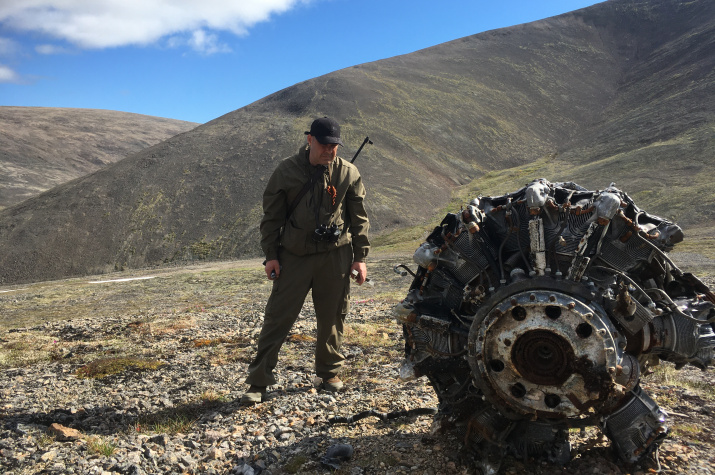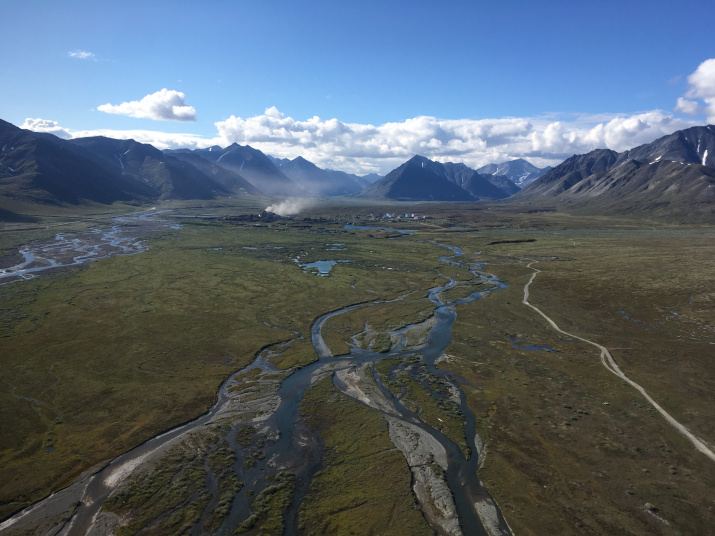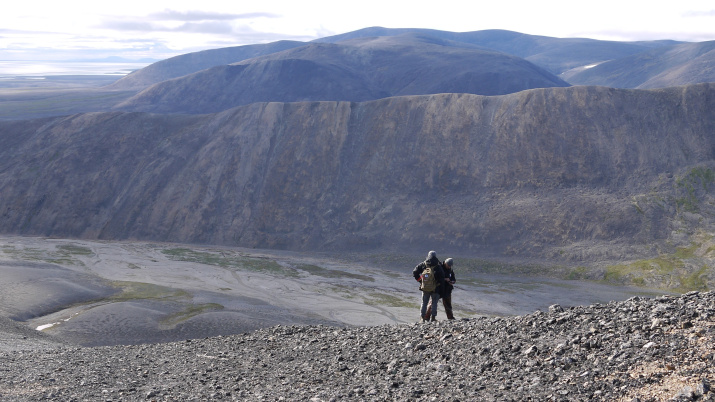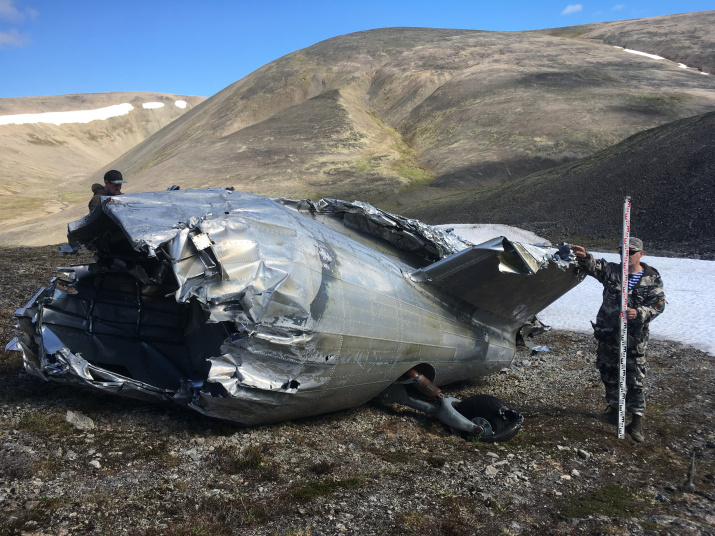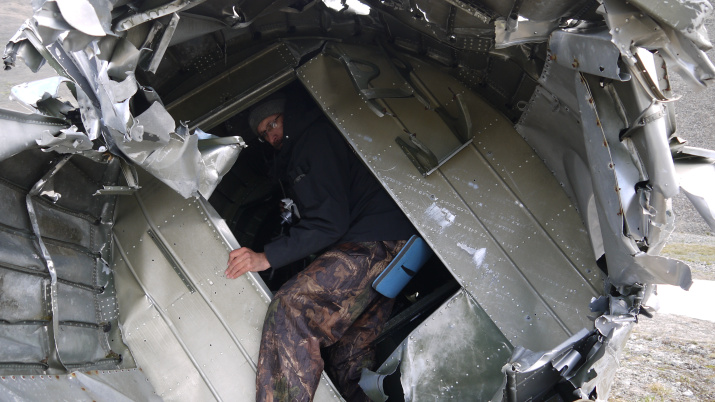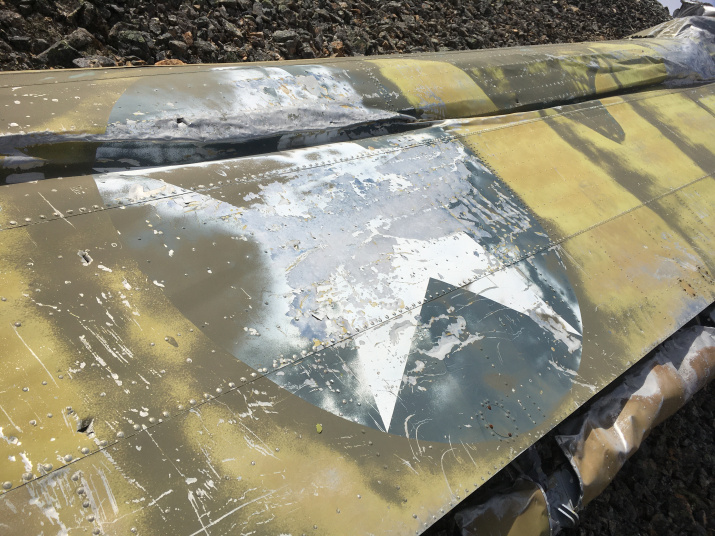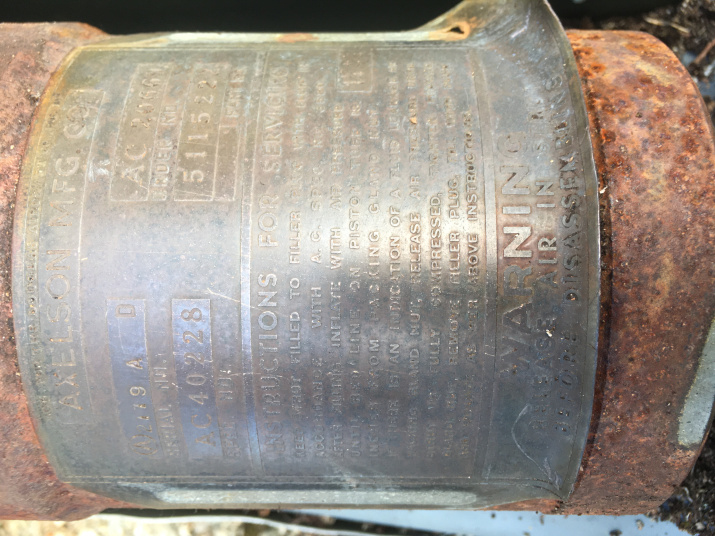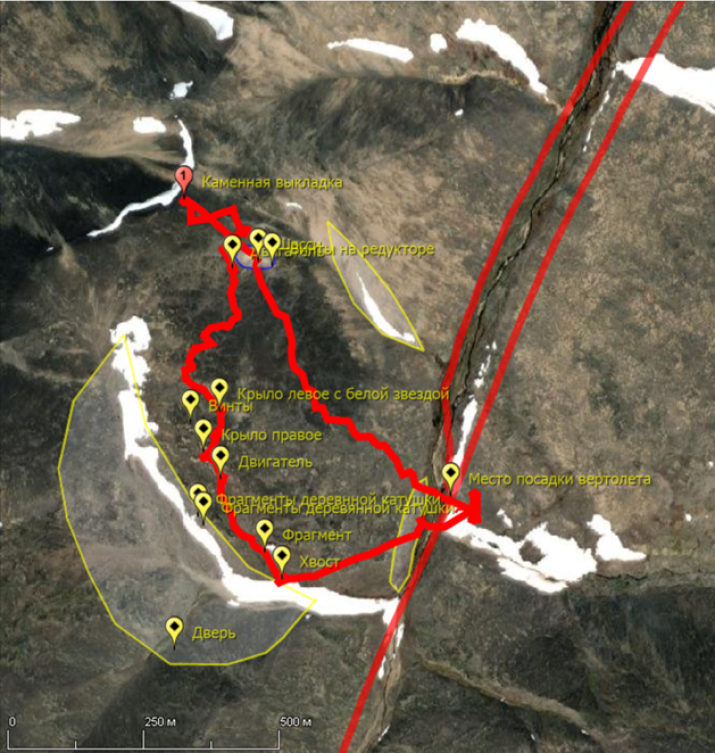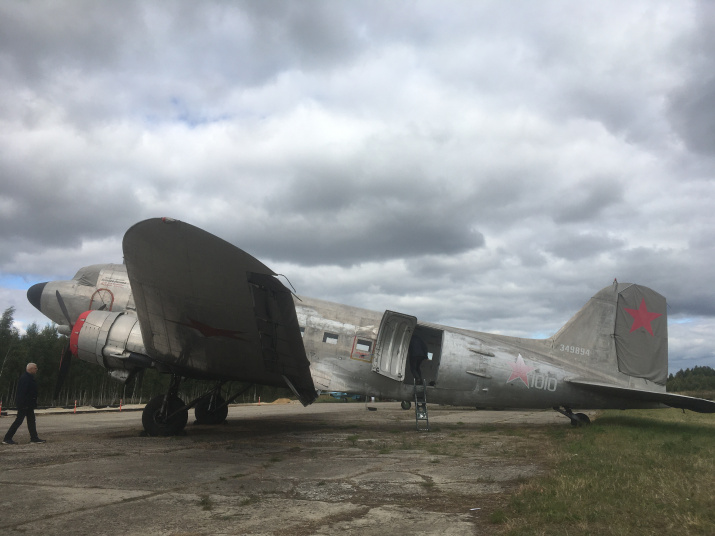After several days of waiting for flight weather, the joint search party of the RGS’s expedition left for the first joint search for the ferrying aircraft Douglas C-47 that crashed in the mountains on May 29, 1943. For simplicity’s sake, we called each plane we were looking for by the name of the commander among ourselves. Today we are looking for "Spiridonov's plane".
July 12, 2022. At 8:30 we get a forecast, at 9:00 we load into the “Ural” on duty, at 10:00 we take off. We know the names of the crew members. The commander is Senior Lieutenant Spiridonov Evgeny Semenovich. Flight technician – Konstantin Ivanovich Kozhukhov. Radio operator – Infantry Alexander Mitrofanovich. There are no exact coordinates, although the place has already been discovered by geologists.
From the memo of the geologist of the Seutakan party Gulpa I. V. dated 06.09.2015: "5-10 m to the south there are partially burned small fragments of the cockpit and controls of the aircraft – pedals, levers, steering wheel, instrumentation, radio equipment, etc. The remains of the crew's personal belongings are located in the same place: wristwatches – 3 pcs.; a star (small in size, probably from a cap); a collar patch ‘square’ (a rank badge of the middle-ranking officers of the Red Army); metal buttons with a star, sickle, and hammer; hooks from a military tunic; a pin; a fragment of a zipper and two zipper pulls; a bunch of keys – 2 pcs.; a latch, a buckle, and half rings from a field bag or tablet; two coins (10 kopecks, 5 cents); a thermos lid; corner protectors and fasteners from a suitcase."
An hour-long flight to Egvekinot. We quickly select local search specialists on-location – and in 40 minutes we are already in the specified area.
The beauty is indescribable: the mountains lit up by the rays of the northern sun take on clear outlines, the lakes outside the porthole are so colorful, ranging from blue to emerald. For me, as for all participants of the RGS’s expedition, it's like a window into the world, like a monitor – while we are flying, we are shown a view film "Magnificent Chukotka" (by analogy with the series "Magnificent Italy", shot 95% from a copter). Only the logo of the RGS in the upper right corner is missing to complete the picture. Like on a TV screen.
As soon as we take off, everyone glues themselves to the windows, as if on command. Later, remembering our searches, I compared them with unpublished notes of the radio operator Viktor Glazkov, who flew over the same mountains and rivers, thinking about the same thing: "The weather turned out to be good: it's clear, visibility is ten out of ten. There are rivers flowing in the gorges below, we don't know which ones, since they simply don't exist on the flight map... I see it for the first time in my life – the panorama is stunning. But my delight was somewhat dampened by the commander, who said that it was beautiful while the engines were working. And if they failed, there was nowhere to land."
At the command of the captain, the members of the search party switch from viewing the "Magnificent Chukotka" to searching. We are, as they say, all eyes. We are praying to our search god. The filmmakers have their own, and the search specialists have their own. By the way, it's high time for the Russian Geographical Society to come up with its own, well, or at least with a mascot – for example, a bloodhound dog. Although... it can be a husky: often you have to harness up and carry huge expedition backpacks. A camel will do too…
However, I got carried away.
I forget about the movie god – let the director and the cameraman observe the ritual. If we find it, there will definitely be something to film. Then, as in a good movie, the drama and tension increase with every minute. We're looking for anything that will catch our eye. Even though the sun is helping, we don’t see anything. We’ve got nothing so far. Another pass, then another. Nothing again. I think to myself: "Spiridonov, come on, look down from above, give us some kind of sign. So many people are looking for your crashed aircraft to put up an obelisk for you and remember you with a word of gratitude. All with decent search experience, almost two hours in the air, so much kerosene was burned – and nothing."
We make the fourth pass – and it's nothing again. Are we really turning around? The commander is doing the fifth pass, and this time – success! We noticed a small fragment of aviation duralumin. It was not shiny – it’s gray was showing on the shady side of the hill.
Now the main thing is for the crew to find a suitable place to land – not just flat, but hard. The Mi-26 is a heavy machine, and the ground is very viscous in places. It's beautiful from above, but if you jump into the grass, there's a swamp under your feet. That’s Chukotka for you!
We're on the ground. The commander gives us two hours, and we cheerfully stomp on the rocks across a stream. We let the film crew to roam freely, and the search party of the RGS, together with the search specialists from Egvekinot, begins to climb the mountain, gradually fanning out.
First we find the tail part – it looks like a C-47, the nameplate on the strut is American. The tail number is crumpled and unreadable. The numbers 4 and 22 are barely readable (Spiridonov's plane number is AC 42-23440). I don't fit into the tail part, so our scientific guru Pavel Filin squeezes inside in search of identification. But there's nothing there.
Gradually, the overall picture reveals itself to us – the debris is scattered on the slopes of not one, but almost two hills. How they were blown so far apart is unclear. Heavy fragments – engines, gearboxes with blades, landing gear – are all scattered from tens to several hundred meters from the crash site of the aircraft. Wings with remnants of paint are 500 meters above the tail. The red stars were almost washed away, but the American ones became visible on a blue background. Small fragments were scattered around by rocks, and mostly by the wind, for more than a kilometer.
Pavel Filin, the lead scientist of the RGS’s expedition, has materials from the archive. However, there are few details: "May 29, 1943. The crash of the C-47 aircraft in the area of the village of Uelkal. When descending in dense clouds, crashed into a hill. The crew was killed."
There are much more details in the notes of the radio operator Viktor Glazkov: "... took off from Fairbanks with the cargo. Heading to Uelkal ... in the clouds, descending prematurely to Uelkal’s non-directional beacon. A mistake in one second cost the crew their lives and the loss of the plane ... the plane caught on the top of the last mountain, sloping down to the shore of the bay. When examining the scene from the air, we found the plane outwardly intact, with the nose of the pilot's cabin torn apart. The engines broke off from the impact and rolled down to the shore of the bay. The plane was carrying cargo: two coils of electric cable 1000 kg each. From the impact, they tore the fastening, rolled through the pilot's cabin, crushing the apparently already dead crew on the way, smashed through the nose of the aircraft, and rolled into the waters of the bay, since they were not visible on the shore."
This particular comment raises a lot of questions for us, although in general this document is still unique – it gives a lot of useful information about how and under what conditions the air route worked. And it increases the chances for us to establish the causes of accidents and crashes. I'm going uphill, and I think to myself that a couple of hours for a thorough examination is nothing at all. I'd like to walk around here for a couple of days.
In turn, we find two Pratt&Whitney engines – at least it's definitely a Douglas. But we do not observe a "plane outwardly intact" here. Large fragments, yes, but the distance between them is considerable. Spiridonov was delivering a cargo – two coils with a cable weighing a ton each. But it's not a kilometer from here to the sea, or even five. Where did they go? And where is the shore here? Maybe the bank of a stream? Maybe it's not the "Spiridonov’s plane" at all? Whose then?
However, it's still a success. Pavel Filin puts a ruler at each found fragment and methodically records everything on camera. Two hours are running out – we begin the descent.
On July 25, two weeks later, we returned. The weather is wonderful, and the commander of the Mi-8 gives much more time for examination this time. We found small details of clothing or seat belts, flares with American brands, and most importantly both wooden coils were also found. In the local climate, they can last for another three hundred years.
The coils rolled down when falling into the nearest hollow between the hills, and even we could not notice them right away. In general, they rolled away relatively close, not to the sea. If we, exploring the hill on foot, did not immediately see them, there was no way the radio operator Viktor Glazkov could do that from the air, at a speed of more than 200 km/h. Now it finally becomes obvious: we have found Senior Lieutenant Evgeny Spiridonov's C-47.
"When examining the scene from the air, we found the plane outwardly intact, with the nose of the pilot's cabin torn apart." After 79 years, we have not found anything remotely resembling the fuselage. In addition, our colleagues from Egvekinot expressed doubts that the crew was discovered and subsequently buried in the village of Uelkal. Pavel Filin, the lead scientist of the RGS’s expedition, agrees with them: "Wartime documents seem non-committal." Well, we have a reason to come back next year.
Comparing both crashes, of the "Douglas" and the Li-2, which we’d found two weeks earlier, it seems that they are a carbon copy of each other. Cloud cover, miscalculation, early descent and... impact. The main impact for both planes happened almost at the top of the hill, and then, partially burning and falling apart, they scattered in large fragments all over the mountain. Cloud cover, an error in calculations, an early descent – this is hardly the only way to explain the causes of the crash. But what then?
In any case, the Chukotka weather was the decisive factor that could turn any error of piloting, navigation, or equipment failure into a tragedy. And it did.
To be continued.
Alexey Nikulin

